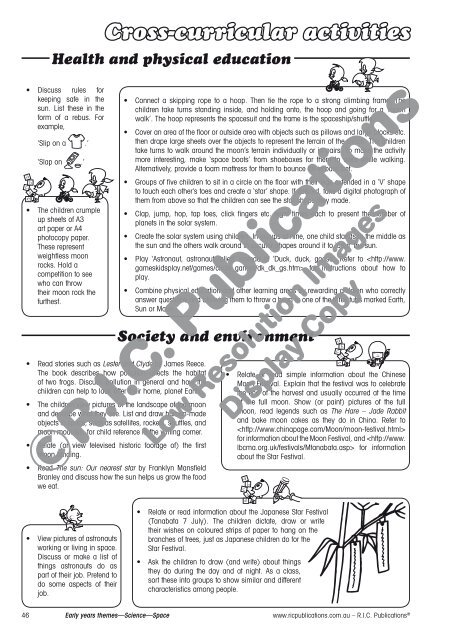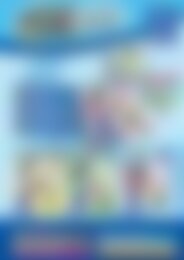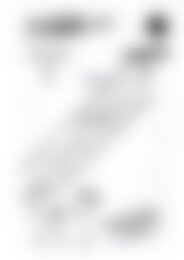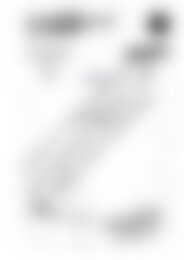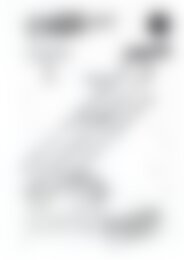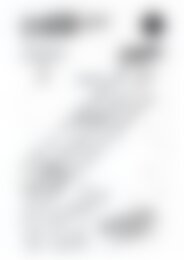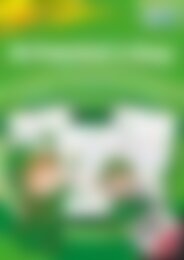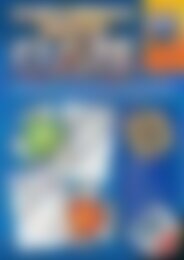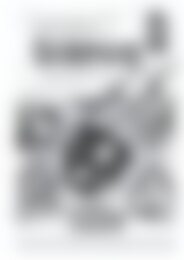RIC-20953 Early years Science - Space
You also want an ePaper? Increase the reach of your titles
YUMPU automatically turns print PDFs into web optimized ePapers that Google loves.
Cross-curricular activities<br />
Health and physical education<br />
• Discuss rules for<br />
keeping safe in the<br />
sun. List these in the<br />
form of a rebus. For<br />
example,<br />
‘Slip on a .’<br />
‘Slap on .’<br />
• The children crumple<br />
up sheets of A3<br />
art paper or A4<br />
photocopy paper.<br />
These represent<br />
weightless moon<br />
rocks. Hold a<br />
competition to see<br />
who can throw<br />
their moon rock the<br />
furthest.<br />
• Connect a skipping rope to a hoop. Then tie the rope to a strong climbing frame. The<br />
children take turns standing inside, and holding onto, the hoop and going for a ‘moon<br />
walk’. The hoop represents the spacesuit and the frame is the spaceship/shuttle.<br />
• Cover an area of the fl oor or outside area with objects such as pillows and large blocks etc.<br />
then drape large sheets over the objects to represent the terrain of the moon. The children<br />
take turns to walk around the moon’s terrain individually or in pairs. To make the activity<br />
more interesting, make ‘space boots’ from shoeboxes for them to wear while walking.<br />
Alternatively, provide a foam mattress for them to bounce on in bare feet.<br />
• Groups of fi ve children to sit in a circle on the fl oor with their legs extended in a ‘V’ shape<br />
to touch each other’s toes and create a ‘star’ shape. If desired, take a digital photograph of<br />
them from above so that the children can see the star shape they made.<br />
• Clap, jump, hop, tap toes, click fi ngers etc. eight times each to present the number of<br />
planets in the solar system.<br />
• Create the solar system using children. In groups of nine, one child stands in the middle as<br />
the sun and the others walk around in circular shapes around it to ‘orbit’ the sun.<br />
• Play ‘Astronaut, astronaut, alien’ instead of ‘Duck, duck, goose’. Refer to for instructions about how to<br />
play.<br />
• Combine physical education and other learning areas by rewarding children who correctly<br />
answer questions and allowing them to throw a bean in one of the three tubs marked Earth,<br />
Sun or Moon.<br />
Society and environment<br />
• Read stories such as Lester and Clyde by James Reece.<br />
The book describes how pollution affects the habitat<br />
of two frogs. Discuss pollution in general and how the<br />
children can help to look after their home, planet Earth.<br />
• The children view pictures of the landscape of the moon<br />
and describe what they see. List and draw human-made<br />
objects in space, such as satellites, rockets, shuttles, and<br />
moon modules, for child reference in the writing corner.<br />
• Relate (or view televised historic footage of) the fi rst<br />
moon landing.<br />
• Read The sun: Our nearest star by Franklyn Mansfi eld<br />
Branley and discuss how the sun helps us grow the food<br />
we eat.<br />
• Relate or read simple information about the Chinese<br />
Moon Festival. Explain that the festival was to celebrate<br />
the end of the harvest and usually occurred at the time<br />
of the full moon. Show (or paint) pictures of the full<br />
moon, read legends such as The Hare – Jade Rabbit<br />
and bake moon cakes as they do in China. Refer to<br />
<br />
for information about the Moon Festival, and for information<br />
about the Star Festival.<br />
• View pictures of astronauts<br />
working or living in space.<br />
Discuss or make a list of<br />
things astronauts do as<br />
part of their job. Pretend to<br />
do some aspects of their<br />
job.<br />
• Relate or read information about the Japanese Star Festival<br />
(Tanabata 7 July). The children dictate, draw or write<br />
their wishes on coloured strips of paper to hang on the<br />
branches of trees, just as Japanese children do for the<br />
Star Festival.<br />
• Ask the children to draw (and write) about things<br />
they do during the day and at night. As a class,<br />
sort these into groups to show similar and different<br />
characteristics among people.<br />
46 <strong>Early</strong> <strong>years</strong> themes—<strong>Science</strong>—<strong>Space</strong> www.ricpublications.com.au – R.I.C. Publications ®


